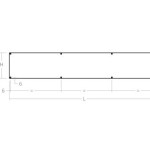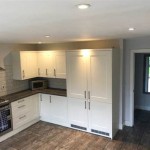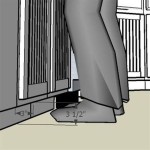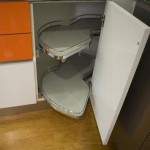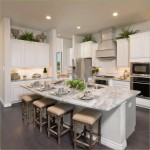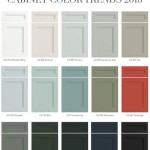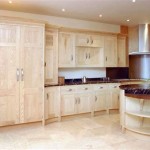Choosing the Right Paint Color For Kitchen Cabinets
Selecting the appropriate paint color for kitchen cabinets is a crucial decision that significantly impacts the overall aesthetic and functionality of a kitchen space. The color of the cabinets influences the perceived size of the room, the ambiance it creates, and how well it integrates with other design elements, such as countertops, flooring, and appliances. A well-chosen color can transform a dated or uninspired kitchen into a welcoming and stylish hub of the home, while a poorly chosen color can detract from the space's potential. Therefore, it is essential to approach this decision with careful consideration and a comprehensive understanding of the factors that contribute to a successful color palette.
Beyond aesthetics, the chosen paint color also plays a role in the perceived cleanliness and upkeep of the kitchen. Lighter colors, for example, can highlight dirt and imperfections more readily, requiring more frequent cleaning. Conversely, darker colors may conceal stains and smudges but can also make the kitchen feel smaller and less inviting if not balanced with adequate lighting. The durability and maintenance requirements associated with different paint colors should also be factored into the decision-making process. The goal is to select a color that not only complements the kitchen's design but also aligns with the homeowner's lifestyle and cleaning habits.
The selection process should involve careful consideration of current trends, the architectural style of the home, and the homeowner's personal preferences. While it can be tempting to follow fleeting color trends, it's often more prudent to choose a timeless color that will remain appealing for years to come. This approach helps to avoid the cost and disruption associated with frequent repainting. The architectural style of the home should also be considered to ensure that the chosen color complements the overall design aesthetic. For example, a modern kitchen may benefit from sleek, minimalist colors, while a traditional kitchen may be better suited to warmer, more classic tones. Ultimately, the chosen color should reflect the homeowner's personal style and create a space that they enjoy spending time in.
Understanding Color Psychology and its Impact on Kitchen Ambiance
Color psychology explores how different colors affect human emotions and behaviors. In the context of kitchen design, understanding these psychological effects can help in creating a specific ambiance. For instance, warm colors like reds, oranges, and yellows tend to stimulate appetite and create a sense of energy, making them suitable for kitchens where socializing and cooking are central activities. However, an excess of these colors can be overwhelming, so it's important to use them strategically and balance them with cooler tones.
Cool colors, such as blues, greens, and purples, often evoke feelings of calmness and serenity. These colors can create a more relaxed and tranquil atmosphere in the kitchen, which can be beneficial in households where the kitchen is used for more than just cooking. For example, a light blue or pale green can create a soothing environment for breakfast or a quiet evening meal. However, it's important to avoid using too much of these colors, as they can sometimes feel cold or uninviting if not properly balanced with warmer accents.
Neutral colors, including whites, grays, and beiges, offer a versatile backdrop that can be adapted to a variety of styles and preferences. These colors are often chosen for their ability to create a sense of spaciousness and light. White cabinets, in particular, are a popular choice for smaller kitchens, as they reflect light and make the room feel larger. Gray cabinets offer a more sophisticated and modern look, while beige cabinets provide a warmer and more inviting feel. Neutral colors also allow for greater flexibility in terms of accessorizing and decorating, as they can be easily paired with a wide range of colors and materials.
The interplay between different colors is also crucial. Complementary colors, which are opposite each other on the color wheel, can create a visually striking contrast when used together. For example, blue and orange, or red and green, can be used to create a vibrant and dynamic kitchen space. Analogous colors, which are adjacent to each other on the color wheel, can create a more harmonious and cohesive look. For example, blue, blue-green, and green can be used to create a calming and serene kitchen environment. The choice of color combinations should be based on the desired mood and aesthetic of the kitchen.
Analyzing Existing Kitchen Elements and Architectural Style
Before selecting a paint color for kitchen cabinets, it is essential to analyze the existing elements within the kitchen space. This includes the color and material of countertops, flooring, backsplash, and appliances. The chosen cabinet color should complement these existing elements to create a cohesive and harmonious design. For example, if the countertops are made of a dark granite, lighter cabinet colors such as white or off-white can provide a contrasting backdrop that highlights the beauty of the granite. Conversely, if the countertops are made of a light-colored quartz, darker cabinet colors such as gray or navy can create a more dramatic and sophisticated look.
The flooring also plays a significant role in determining the appropriate cabinet color. If the flooring is made of a warm-toned wood, cabinet colors with similar warm tones can create a cohesive and inviting atmosphere. If the flooring is made of a cool-toned tile, cabinet colors with cool tones can create a more modern and sophisticated look. It is important to consider the undertones of both the flooring and the cabinet color to ensure that they work well together and do not clash.
The architectural style of the home should also be taken into consideration when choosing a cabinet color. For example, a traditional home may benefit from classic cabinet colors such as white, cream, or natural wood tones. A modern home may benefit from sleek and minimalist cabinet colors such as gray, black, or white. A farmhouse-style home may benefit from warm and rustic cabinet colors such as off-white, sage green, or light blue. The chosen cabinet color should complement the overall architectural style of the home and enhance its inherent characteristics.
Natural light conditions within the kitchen should also be considered. Kitchens with ample natural light can handle darker cabinet colors without feeling too small or cramped. However, kitchens with limited natural light may benefit from lighter cabinet colors that reflect light and make the room feel brighter and more spacious. It is important to consider the amount of natural light that enters the kitchen at different times of the day to ensure that the chosen cabinet color is flattering and appropriate.
Finally, the homeowner's personal preferences should be taken into account. While it is important to consider current trends and design principles, the chosen cabinet color should ultimately reflect the homeowner's personal style and create a space that they enjoy spending time in. The homeowner should choose a color that they find visually appealing and that makes them feel comfortable and happy in their kitchen.
Exploring Different Paint Finishes and Durability Considerations
The paint finish chosen for kitchen cabinets is nearly as important as the color itself. The finish affects the appearance, durability, and ease of cleaning of the cabinets. Different paint finishes offer varying levels of sheen, which impacts how light is reflected and how well the surface resists scratches and stains. Commonly used finishes include matte, eggshell, satin, semi-gloss, and high-gloss. Each has its own set of advantages and disadvantages, and the best choice depends on the specific needs and preferences of the homeowner.
Matte finishes offer the lowest sheen and provide a soft, velvety look. They are excellent at concealing imperfections and creating a smooth, uniform appearance. However, matte finishes are less durable and more difficult to clean than other options. They are more susceptible to staining and may require more frequent touch-ups. Therefore, matte finishes are generally not recommended for high-traffic areas such as kitchen cabinets.
Eggshell finishes have a slightly higher sheen than matte and offer a more durable surface. They are easier to clean than matte finishes and provide a subtle, elegant look. Eggshell finishes are a good compromise between aesthetics and practicality, making them a popular choice for kitchen cabinets. However, they are still not as durable as higher-sheen options and may show fingerprints and smudges more readily.
Satin finishes offer a moderate sheen and provide a smooth, luxurious look. They are more durable than eggshell finishes and are easier to clean. Satin finishes are a good choice for kitchen cabinets that are frequently used and require regular cleaning. They offer a good balance of aesthetics and durability, making them a versatile option for a variety of kitchen styles.
Semi-gloss finishes have a higher sheen than satin and provide a shiny, reflective surface. They are very durable and easy to clean, making them an excellent choice for kitchen cabinets that are exposed to frequent spills and splatters. Semi-gloss finishes are also more resistant to moisture and humidity, making them suitable for kitchens with high humidity levels. However, they can highlight imperfections and may appear too shiny for some tastes.
High-gloss finishes offer the highest sheen and provide a highly reflective, mirror-like surface. They are extremely durable and easy to clean, making them ideal for modern kitchens with a sleek and minimalist design. High-gloss finishes are also very resistant to moisture and humidity. However, they can be very unforgiving and highlight even the smallest imperfections. They also require meticulous preparation and application to achieve a flawless finish.
The durability of the paint is also a critical consideration. Kitchen cabinets are subject to frequent use and exposure to moisture, grease, and other contaminants. Therefore, it is essential to choose a paint that is specifically formulated for kitchen cabinets and is resistant to these elements. Look for paints that are labeled as "cabinet paint" or "furniture paint" and that are designed to withstand frequent cleaning and scrubbing. Consider using a primer to ensure proper adhesion and durability.

70 Top Kitchen Paint Colors Best 2024

38 Popular Colors To Paint Kitchen Cabinets Amber Oliver

Kitchen Cabinet Paint Ideas

21 Kitchen Cabinet Ideas Paint Colors Inspiration Benjamin Moore

14 Green Kitchen Cabinet Ideas 2024 Top Paint Colors For Kitchens

Popular Kitchen Cabinet Paint Colors West Magnolia Charm

The Best Sherwin Williams White Paint Colors For Cabinets

Top 10 White Paint Colours For Kitchen Cabinets Pamela Lynn

The Best Blue Gray Paint Colors For Kitchen Cabinets Wm Design House

How To Paint Kitchen Cabinets Best Color Ideas Cost

